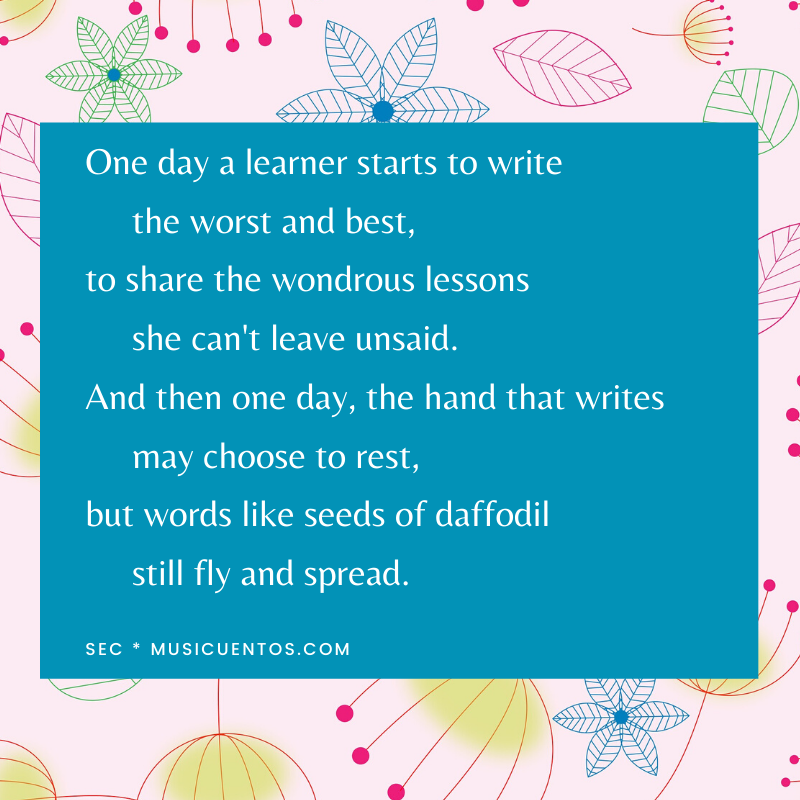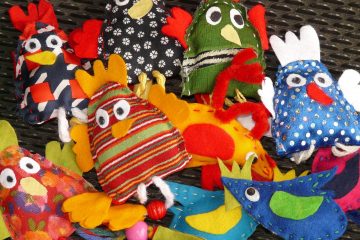We’ve come to the end, Musicuentos reader. You and I have been on quite a journey together, and I’m sure I’ve written something through the years that you loved and/or hated. Of 699 posts, here are the top ten Musicuentos posts of all time (actually, since hits have been measured by Google Analytics, which is 2012).
10. The original Cajas de cartón & Esperanza renace post
By far, my reading guide to the Francisco de Jiménez memoir Cajas de cartón is my best-selling single resource. The fancy for-sale document was born out of my simply making vocabulary lists and reading questions for the book to use with my Spanish 3 learners. I did the same for the novel Esperanza renace (and have a similar fancy guide available for that one), but the post with the original set of questions is my tenth-most accessed entry.
9. Proficiency & tacos
Offering a learner-accessible analogy for proficiency levels has been an important Musicuentos contribution. It was one of my favorites, and one of yours as well.
8. Forced to adopt a textbook: Now what?
I was surprised to see this in the top 10, honestly. I guess more teachers than I realize are being forced by a district to adopt a textbook that they don’t want to use. Here, I offer up advice from a couple of friends in similar situations.
7. TPRS strategies I don’t put in my toolbox
I love the way teaching with comprehensible input transformed my learners’ experience and also transforms other teachers’ classrooms every day. I love the revolution that discovering Teaching Proficiency through Reading and Storytelling brought to my classroom. But I think that one of the reasons some teachers very vocally oppose TPRS is that they think they have to use every strategy that is identified with TPRS-related approaches. It’s not true. I have never done person-of-the-day or a one-word-image and probably never will. I don’t require learners to give pretend responses. I don’t speak as slowly as I possibly can or use English as my go-to method for establishing meaning. It’s fine if you do, and it’s fine if you don’t – as long as you’re making meaning for a purpose with your learners. Check out which strategies I’ve typically avoided in this 7th-most-popular post.
6. Very short times with very young kids
One of my oldest posts was about my journey being dropped into preschool Spanish from being a primarily high school teacher. I think I share this post more than any other in response to questions via email and social media. A lot of teachers are wondering if and what they can accomplish with precious minutes with the littlest learners, and this post resonates with them still.
5. Your 15-minute(ish) guide to the new NCSSFL-ACTFL Can-Do Statements
It’s very telling that this post made it so high on this list given how late in the life of my blog I published it. I think for a lot of teachers, the Can-Do Statements are some lofty guiding light, but the practical application gets fuzzy or unnecessarily difficult, and I’ve been on a mission to change that.
4. 7 Brain Breaks for World Language Teachers
You know, I wouldn’t have called myself much of an expert on brain breaks, but in any case, it seems a lot of you are looking for new ideas for these!
3. Songs for future tense
There’s just something about music to reach learners like nothing else. It seems to shut down anxiety, get chunks of language stuck in their heads, automatize improved pronunciation and prosody, and more. I’ve suggested songs for subjunctive, songs for “voy a,” songs for idioms, but this post on songs for future tense, of all structures, made it to the top 3 Musicuentos posts.
2. My performance rubric
I used an adapted version of the Jefferson County (KY) Public Schools’ rubric for quite some time until I decided to update it with several features and changes that had occurred to me as I’d used it. The updated rubric is still my most requested original document.
1. Top 20 Songs for Spanish Class
In 2007, as I prepared to start a new job as a fourth-year teacher, I went to an AP Spanish workshop at the University of Georgia. Honestly, I didn’t learn much from the trainer, but one thing she did changed my life, and yours. She handed us the lyrics to two songs (“19 de noviembre” by Carlos Vives and “Olvídame y pega la vuelta” by Pimpinela) and asked us to brainstorm how we could use them in class. As we highlighted vocabulary and structures and planned activities, I was hooked. A little over a year later, I put together my love for music and stories in world language teaching and started Musicuentos.
A full 15% of the total hits on my blog are on this top-of-2016 post and its original entry. I actually have twice as many hits on this post as on my homepage. I ask you: what more fitting post could there be for the top MUSICuentos post of “all time”?




